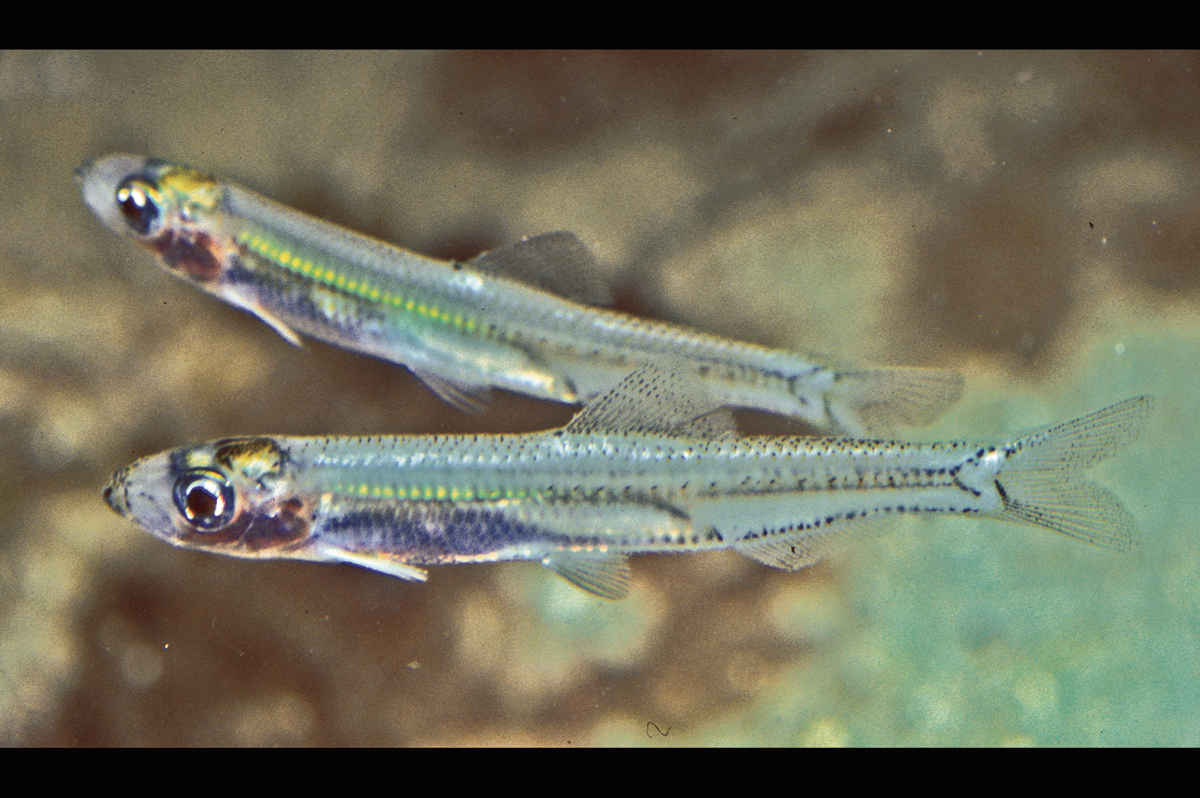- Classification
- ACTINOPTERYGII
- CLUPEIFORMES
- CLUPEIDAE
- Sprattus
- novaehollandiae
Australian Sprat, Sprattus novaehollandiae (Valenciennes 1847)
Other Names: Sprat

Australian Sprat, Sprattus novaehollandiae. Source: Rudie H. Kuiter / Aquatic Photographics. License: All rights reserved
Summary:
A poorly known sprat with a dark blue back, silvery below, with darker specks scattered on the jaws, in front of the eye and on the caudal peduncle, darkly spotted dorsal, caudal and pectoral fin rays. The species has a slightly protruding lower jaw, and lacks bony striations on the gill cover. Although scutes are present along the ventral surface of the abdomen, they are rounded and not sharply keeled. Scutes are absent on the back before the dorsal fin.
Cite this page as:
Bray, D.J. 2025, Sprattus novaehollandiae in Fishes of Australia, accessed 27 Jun 2025, https://fishesofaustralia.net.au/Home/species/2070
Australian Sprat, Sprattus novaehollandiae (Valenciennes 1847)
More Info
|
Distribution |
Port Jackson, New South Wales, to Tasmania, and possibly west to Spencer Gulf, South Australia. Forms schools in coastal waters, especially around Tasmania, including in deeper bays and estuaries. |
|
Features |
Dorsal fin 15-18; Anal fin 18-21; Caudal fin 19; Pectoral fin 17-18; Pelvic fin 8; Oblique scale rows on side 44. Body moderately shallow (20-23% SL), elongate, compressed; caudal peduncle moderately narrow. Head small (25-29% SL); eyes of moderate size (27-33% HL), narrow strips of transparent adipose tissue along anterior and posterior edges of eye; mouth moderately small (upper jaw length approx. 44% HL), oblique, maxillae broad, reaching to below centre of eye; lower jaw slightly projecting; teeth minute or absent, scattered anteriorly when present. Scales moderately large, cycloid, weakly attached, covering body but absent from head, compressed into serrated keel on underside but not on back; lateral line absent. Dorsal fin short-based, positioned centrally on back, anterior rays much longer than posterior rays; anal fin low, of moderate length, located posteriorly; caudal fin forked. Pectoral and pelvic fins small, each with prominent axillary tissue, pectorals just above ventral profile of body behind head; pelvic fins arising below area immediately in front of dorsal fin. |
|
Biology |
The species may be seasonally abundant. In Tasmanian waters, the species occurs in large schools, especially during August-November, often entering estuaries. |
|
Etymology |
The specific name novaehollandiae (= New Holland) is an old name used for Australia. |
|
Species Citation |
Meletta novaehollandiae Valenciennes in Cuvier & Valenciennes 1847, Histoire Naturelle des Poissons Vol. 20: 376. Type locality: Port Jackson, New South Wales. |
|
Author |
Bray, D.J. 2025 |
|
Resources |
Australian Sprat, Sprattus novaehollandiae (Valenciennes 1847)
References
Blackburn, M. 1941. The economic biology of some Australian clupeoid fish. Aust. CSIRO Bulletin 138(Division of Fisheries Report 6): 135 pp, http://hdl.handle.net/102.100.100/339234?index=1 (as Clupea bassensis)
Gaughan, D., Munroe, T.A. & Mohd Arshaad, W. 2017. Sprattus novaehollandiae. The IUCN Red List of Threatened Species 2017: e.T98840585A98887024. https://dx.doi.org/10.2305/IUCN.UK.2017-3.RLTS.T98840585A98887024.en. Downloaded on 21 April 2021.
Gomon, M.F. 1994. Families Halosauridae, Notacanthidae, Clupeidae, Engraulidae, Gonorynchidae, Plotosidae, Salmonidae. pp. 215-231 figs 192-206 in Gomon, M.F., Glover, C.J.M. & Kuiter, R.H. (eds). The Fishes of Australia's South Coast. Adelaide : State Printer 992 pp. 810 figs.
Last, P.R., Scott, E.O.G. & Talbot, F.H. 1983. Fishes of Tasmania. Hobart : Tasmanian Fisheries Development Authority 563 pp. figs.
Macleay, W.J. 1881. Descriptive catalogue of the fishes of Australia. Part 4. Proceedings of the Linnean Society of New South Wales 1 6(2): 202-387 (as Clupea novaehollandaie and Clupea sprattus) See ref at BHL
McCulloch, A.R. 1911. Report on the fishes obtained by the F.I.S. Endeavour on the coasts of New South Wales, Victoria, South Australia and Tasmania. Part 1. Zoological (Biological) Results. Endeavour 1(1): 1-87 figs 1-20 pls 1-16 (described as Clupea (Pomolobus) bassensis, type locality - off Flinders Island and off Storm Bay, Tasmania)
Regan, C. T. 1916. The British fishes of the sub-family Clupeinae and related species in other seas. Annals and Magazine of Natural History 8 18(103)(1): 1-19, Pls. 1-3 See ref at BHL
Valenciennes, A. 1847, in Cuvier, G.L. & Valenciennes, A. Histoire Naturelle des Poissons. Paris : Levrault Vol. 20 472 pp. pls 591-606. (described as as Meletta novae-hollandiae) See ref at BHL
Waite, E.R. 1921. Illustrated catalogue of the fishes of South Australia. Records of the South Australian Museum (Adelaide) 2(1): 1-208 293 figs pl. 1 (as Clupea bassensis) See ref at BHL
Whitehead, P.J.P. 1985. FAO species catalog. Clupeoid fishes of the world (suborder Clupeoidei). Part 1 — Chirocentridae, Clupeidae and Pristigasteridae. FAO Fisheries Synopsis No. 125 Vol. 7 Pt 1. pp. 1-303
Whitehead, P.J.P. 1967. The clupeoid fishes described by Lacepède, Cuvier and Valenciennes. Bulletin of the British Museum (Natural History) Zoology Supplement 2: 1-180, Pls. 1-11. See ref at BHL
Whitley, G.P. 1932. Studies in Ichthyology. VI. Records of the Australian Museum 18(6): 321-348, https://doi.org/10.3853/j.0067-1975.18.1932.737 (as Maugeclupea bassensis)


